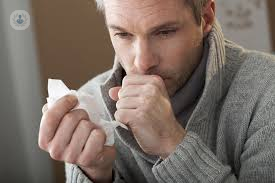


What is pulmonary tuberculosis?
Pulmonary tuberculosis is a bacterial infection that affects the lungs and can spread to other organs. The bacteria can be spread from an affected individual to another person. The infection can be transmitted by inhaling water droplets when an infected person coughs or sneezes.

Symptoms of pulmonary tuberculosis
Pulmonary tuberculosis can cause a wide variety of symptoms:
- breathing difficulties
- chest pain
- coughing up mucous or blood
- excessive sweating, especially at night
- fatigue
- fever
- weight loss
- wheezing
Causes of pulmonary tuberculosis
The main cause of pulmonary tuberculosis is through inhaling tiny droplets of saliva from an infected person. These particles reach the deepest parts of a healthy person's lungs and cause infection.
Cases of pulmonary tuberculosis are higher in poorer areas of the world, particularly where there is overcrowding, as the bacteria can easily spread in a closed and poorly ventilated space.
How is it diagnosed?
The skin test is the most common way to diagnose pulmonary tuberculosis. This involves injecting a very small amount of tuberculin just beneath your skin and waiting to see if there is a reaction.
A positive test result (swelling or a hard bump) is evidence that you have the TB bacteria in your body. However, this is not conclusive proof that you have tuberculosis. You are likely to have a follow-up X-ray to see if there is an infection in your lungs.
What does treatment consist of?
The ultimate goal of the treatment is to cure the disease, and different medicines are used over a long period of time. The medical tests performed when the disease was first detected will determine what type of medication should be taken.
Time limits and tablet dosage must be strictly adhered to, as failure to do so can lead to drug resistance and can make it more difficult to eliminate the infection from the body. In any case, the specialist will recommend when it is safe to end treatment.